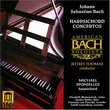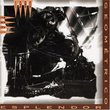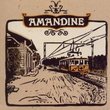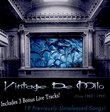| All Artists: Sara Stowe;Sharon Lindo;Jon Banks;Matthew Spring;The Oxford Girls' Choir Title: Making Merrye: Joyful Medieval Song and Dances Members Wishing: 3 Total Copies: 0 Label: The Gift of Music Original Release Date: 1/1/2003 Re-Release Date: 2/2/2006 Genres: Folk, Classical Styles: British & Celtic Folk, Symphonies Number of Discs: 1 SwapaCD Credits: 1 UPC: 658592106220 |
Search - Sara Stowe;Sharon Lindo;Jon Banks;Matthew Spring;The Oxford Girls' Choir :: Making Merrye: Joyful Medieval Song and Dances
 | Sara Stowe;Sharon Lindo;Jon Banks;Matthew Spring;The Oxford Girls' Choir Making Merrye: Joyful Medieval Song and Dances Genres: Folk, Classical
Making Merrye Joyful medieval song and dances Cheerful sounds and ringing melodies abound in this lovely collection of late-medieval music, compiled with the colourful cover image in mind. Bombards, shawms, lutes, harps an... more » |
Larger Image |
CD Details
Synopsis
Product Description
Making Merrye Joyful medieval song and dances Cheerful sounds and ringing melodies abound in this lovely collection of late-medieval music, compiled with the colourful cover image in mind. Bombards, shawms, lutes, harps and gitterns provide a rich programme of music, with songs and instrumental music from Spain, Italy, France and Britain. 'To pleye on sundry Instrumentys, On harpe, lut & on gyterne, And to revelle at taverne' John Lydgate: The Pilgrimage of the Life of Man c.1430 From the Artist Sara Stowe voice, pipe and tabor Sharon Lindo pipes Jon Banks voice, gittern, harp, dulcimer, percussion, shawm Matthew Spring lute, gittern, hurdy-gurdy, percussion, The Oxford Girls' Choir Estampie John Rowlands-Pritchard Worldes bliss Michelene Wandor recorder The programme begins with the 'Bear Dance', played at the start by pipe and tabor (it's actually a very clever trick for a single person - Sara Stowe - to manage two instruments at once). She is joined by the hurdy-gurdy, with its unusual combination of insistent drones and superb rhythmic clarity. Finally the dulcimer joins in. This instrument is played by hammers hitting pre-tuned strings, which are laid out somewhat as if the instrument was a horizontal harp. Other instruments can also be heard on this album, from the small bagpipes, played by Sharon Lindo, to the common medieval line up of a variety of plucked string instruments. The first to be heard is the gittern, which joins the hurdy-gurdy early in track 5. This is a small instrument, a little like a lute. Its strings are played with a plectrum. Later we also hear the lute itself, and the medieval harp - a small, gentle instrument with a clear, singing tone. Songs on the album come from all over Europe. 'Mi veri joye' is English. 'Scaramella' is Italian - and very cheerful. Tracks 21 and 22 are Spanish and the melody and text of track 18 are Scottish in origin. The 'Agincourt Carol' has French associations, while the two lute pieces (tracks 11 and 12) are from Neusidler's German tablature. The title 'Ductia' appears several times: these are medieval instrumental pieces of varying complexity and arranged here for a differing variety of instruments. The 'Estampie' and 'Saltarello' are different types of medieval dances, as are the 'brawles'. In between these exciting pieces there are some more reflective works involving the plucked instruments. 'Alma redemptoris mater' is dedicated to the Virgin Mary, an important figure in the spiritual lives of everybody in Europe before the religious upheavals of the Reformation in early Renaissance times.
Similar CDs
| Esplendor Geometrico 1980-1982 Genre: Rock Label: Staalplaat | |
| Amandine This Is Where Our Hearts Collide Genres: Alternative Rock, Pop, Rock Label: Fat Cat | |
| Twenty 4 Seven Back Again Genres: International Music, Pop Label: Avex Trax Japan | |
| Milo Vintage De Milo Genre: Rock Label: TributaryMusic.com | |

 Track Listings (24) - Disc #1
Track Listings (24) - Disc #1



